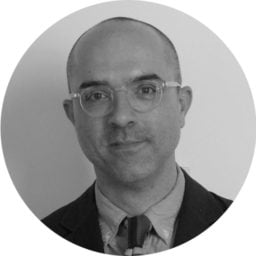Art World
Artcore: How the Chicago Imagists Tested Pop-Era Sensibilities
The loose group of artists drew on popular imagery, but with a more earthy and even carnal energy.
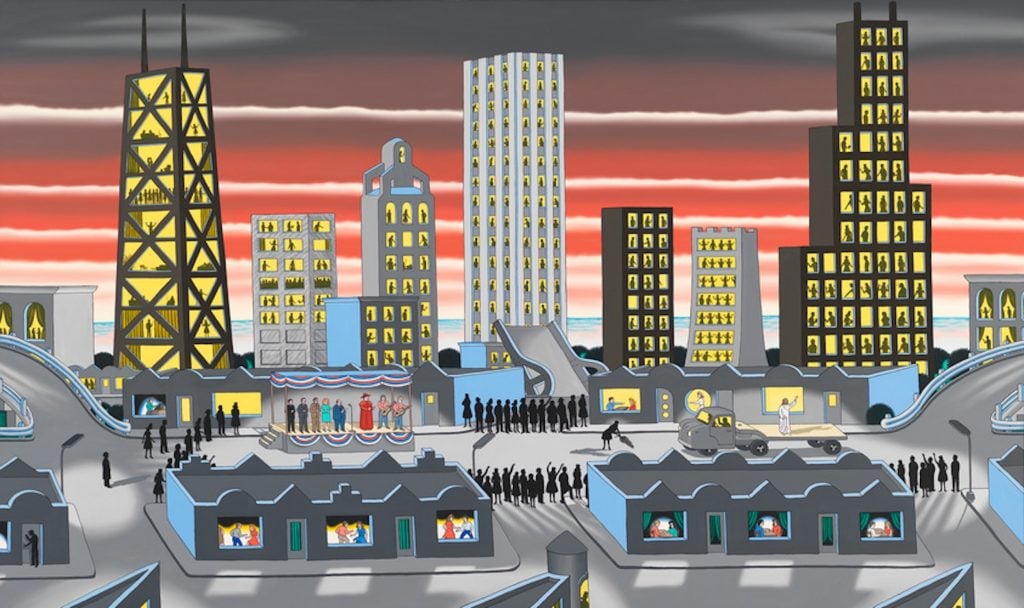
It was 1964, and a handful of Chicago artists thought it would be fun to organize a show. While they weren’t a group in any formal way, their work had affinities: they were making funky, figurative work that drew on popular sources like tattoo art, comic books, and popular advertising. So, Jim Falconer, Art Green, Gladys Nilsson, Jim Nutt, and Suellen Rocca approached Dan Baum, the curator of the Hyde Park Art Center (and an artist in his own right), to pitch a show. A receptive Baum suggested they add Karl Wirsum.
But what would they call the show, much less the group? Wishing to avoid the “suave coolness” with which curators were often naming shows (think “16 Americans” at New York’s Museum of Modern Art), they wanted something more colorful. The subject turned to local artist/critic Harry Bouras. Wirsum, unfamiliar with Bourras, kept asking, “Harry who?” This struck the artists as funny, and riffing on his question soon yielded up the name of their little band: The Hairy Who?
The story actually tells you a few key things about the group: they were democratic, they had a sense of humor, they loved wordplay, they were self-effacing (that question mark!), and they didn’t do things like they did them on the coasts.
They were also part of a larger, even looser confederation of similar artists known as the Chicago Imagists, who spanned generations and included yet more humorously named groups.
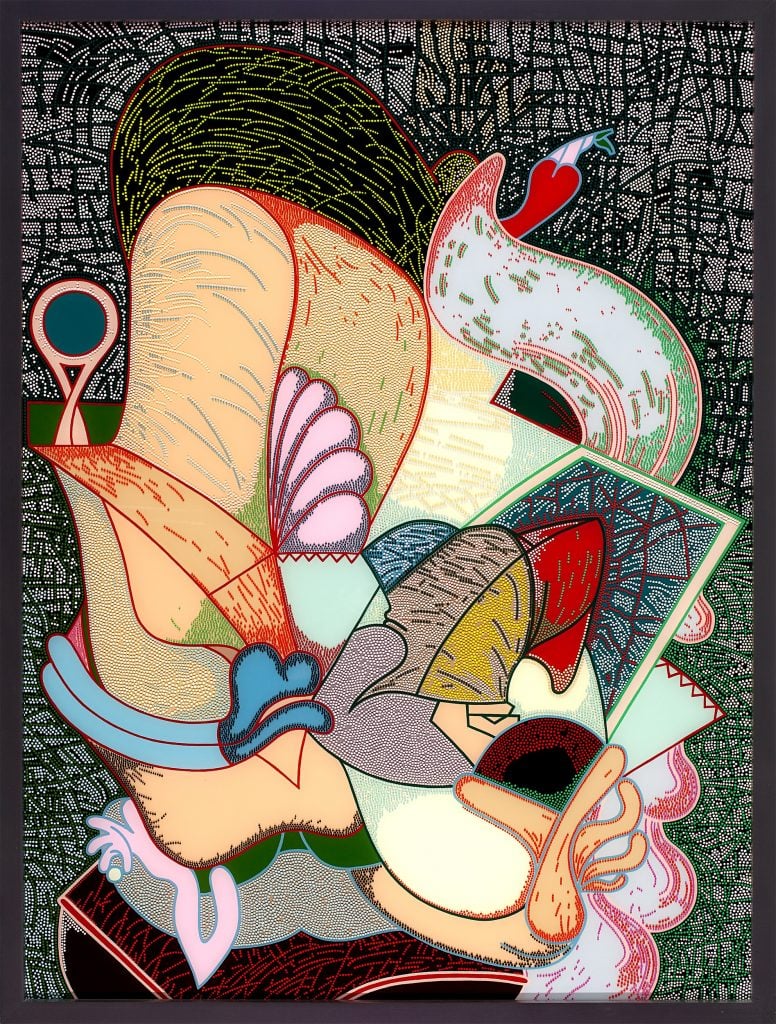
Barbara Rossi, Eye Deal (1974). Collection of the Madison Museum of Contemporary Art. The Bill McClain Collection of Chicago Imagism. © Estate of Barbara Rossi. Courtesy of Madison Museum of Contemporary Art, Wisconsin.
What was Chicago Imagism?
Well, first of all, it wasn’t a movement at all. Most call it something like a “loose-knit group,” and it included the Hairy Who (we’ll do without the question mark here) as well as some of their predecessors.
In fact, the name Chicago Imagists was coined only later, by art historian Franz Schulze, and included artists who came of age in the postwar years. The artists drew inspiration from everyday material like posters, pinball machines, broadsides, placards, vintage postcards, tattoos, and cast-off toys. They had, Schulze said, a “tendency toward surrealist content, painterly method, and subject matter that was personally expressive.” He added that “‘Chicago-type’ art is not only not rational, it is anti-rational to the point of perversity.”
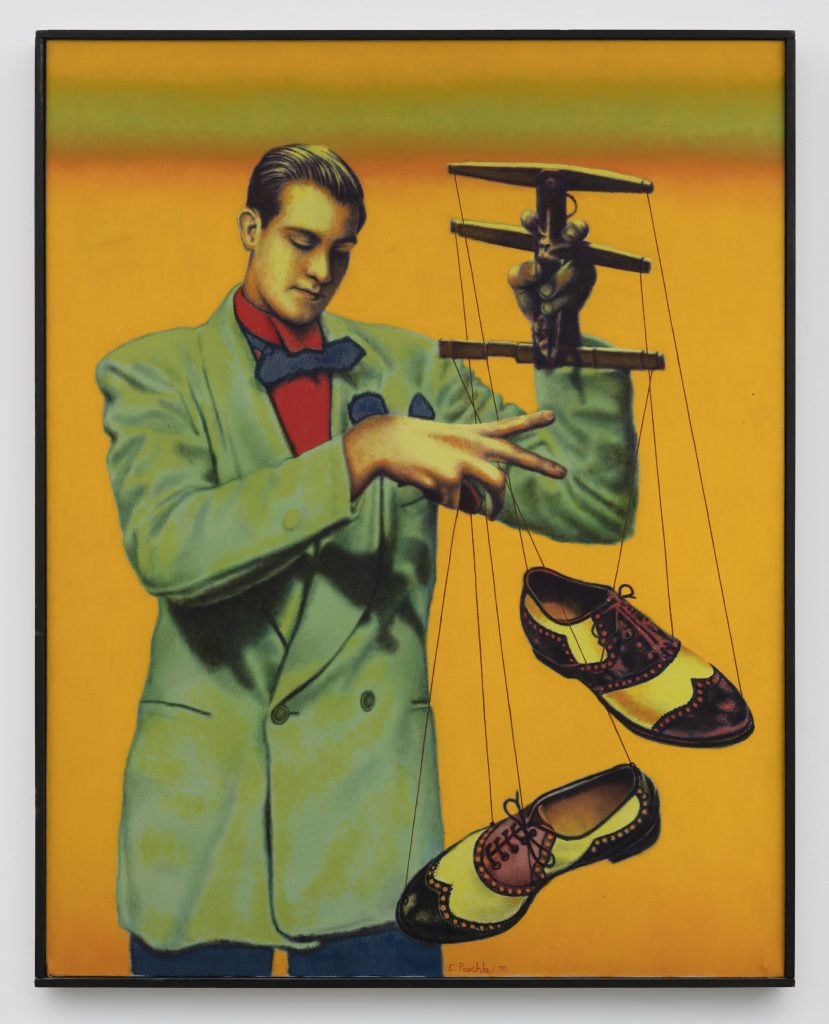
Ed Paschke, Shoe Puppet (1969). Courtesy Karen Lennox Gallery.
The larger Imagist category also encompassed two other groups: the Monster Roster and the Nonplussed Some.
The Monster Roster included artists who would go on to fame such as Leon Golub, June Leaf, Nancy Spero, and H.C. Westermann. Schulze named this group too, based on work that was at times truly distasteful. Many of them studied under Verda Berdich, a Surrealist printmaker at the School of the Art Institute of Chicago. Golub became known for hard-hitting paintings that revealed humankind at its worst, showing, for example, scenes of interrogation and torture. Spero, his wife, also created outspokenly political work in a strongly feminist vein. Westermann, after extensive and brutal military experience, studied at the School of the Art Institute of Chicago on the G.I. Bill and often depicted his wartime experience in his work.
The larger Imagists category, meanwhile, folds in the Hairy Who and the Monster Roster along with Roger Brown, Ed Paschke, Barbara Rossi, and Ray Yoshida. While Paschke may be one of the better-known names among the Imagists and is often thought to be an early member of the confederation, curator Lynne Warren has pointed out that he actually only started the Nonplussed Some after seeing the first Hairy Who exhibition.
Who were behind the Chicago Imagists?
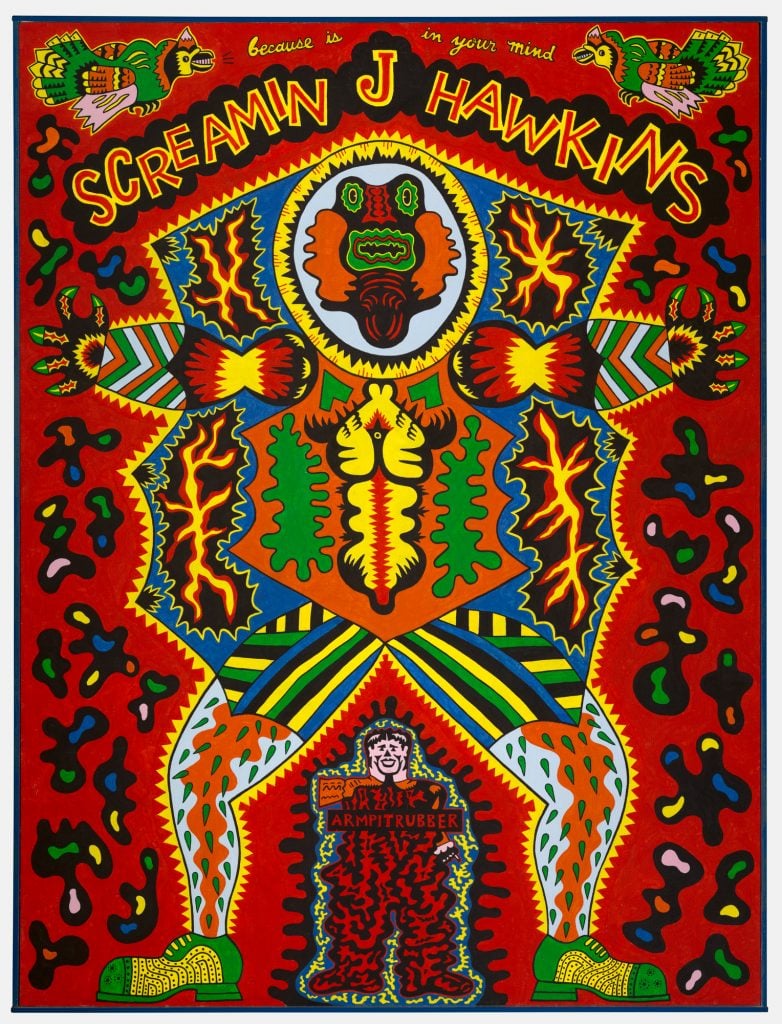
Karl Wirsum, Screamin’ Jay Hawkins (1968). © Karl Wirsum. Courtesy of the Art Institute of Chicago.
As with many art movements, it wasn’t only the artists who were responsible for the movement’s success.
First, there were the educators who trained them. Many Imagists studied at the School of the Art Institute of Chicago; the Hairy Who all worked under instructors Whitney Halstead and Yoshida, who were key to their development. Halstead was also an assistant in the Field Museum’s anthropology department and introduced them to African art, Native American pottery, and self-taught artists like Joseph Yoakum. Yoshida, for his part, was a big flea market collector, encouraging his students’ interest in everyday objects. Recounting Yoshida’s influence, Nutt wrote: “He had a special knack for getting students to think about the possibilities of their work, encouraging them to experiment from within, and, as such, take chances.”
And Baum was thoroughly supported by Ruth Horwich, co-chairman of the Hyde Park Art Center’s board. Lively openings at the Center were followed by similarly lively parties at her home, with some of the artists even crashing there and heading to flea markets together the next morning.
When Chicago dealer Phyllis Kind organized a show of a contemporary Chicago artist, the Hairy Who were emboldened to ask her directly if she would be open to showing them—and show them she did, soon representing a number of the Imagists. When she moved to New York, she showed some of them there.
Few artists can survive without collectors; major patrons like Ruth and Leonard Horwich, Ed and Lindy Bergman, and Susan and Lewis Manilow were big supporters of the artists.
Institutions were also important. Art Institute of Chicago curator A. James Speyer included many Imagists in his recurring “American Exhibition” shows, which placed them in a national context. Whitney Museum of American Art director Thomas Armstrong worked with curator Marcia Tucker to bring a major show to New York, and curators like James Demetrion and Robert Storr (who earned an MFA from the School of the Art Institute) helped get them placed in museums and with important museum patrons.
Why are we still talking about the Chicago Imagists?
Just as dealers, collectors, and institutions helped to birth the Imagist phenomenon, a number of parties have been responsible for a recent surge in interest in these practitioners.
Dealers have helped to care for these artists’ legacy, continuing to show their work and place it with collectors and museums, such as New York’s Derek Eller, who represents Wirsum; Chicago’s Corbett vs. Dempsey, whose roster includes Flood, Ramberg, and Wirsum; and Chicago’s Karen Lennox, showing Brown, Miyoko Ito, and Westermann, among others.
Auction houses and museums have also been part of the ratcheting up of interest. In 2021, auctioneer Phillips and Lennox organized a selling exhibition, “Cooler by the Lake: Chicago Art 1965–1985,” organized by Lennox and including works by Brown, Nutt, and Ramberg; the same year, “Private Eye: The Imagist Impulse in Chicago Art” appeared at Newfields in Indianapolis.
There are some parallels between then and now. The Imagists were coming out of a time when Abstract Expressionism was the lingua franca of American art, and they swam against the current by turning to figurative work. That’s echoed in a recent transition: A decade ago, there was so much abstraction afoot that critic Walter Robinson dubbed some of it “Zombie Formalism.” The pendulum then swung back to figuration, some of it pretty raunchy, putting artists like Julie Curtiss, Louis Fratino, Emily Mae Smith, Salman Toor, and Ambera Wellmann in the spotlight.
Lennox points out several interlocking parts of the art-world ecosystem that have led to a fresh look at these artists.
“Given that the Imagists were sought-after from the very start, and that there were some very major exhibitions in the 1970s (Nutt at the Venice Biennale and the Whitney, Nilsson at the Whitney, and major touring group exhibitions in Europe and South America), the recent surge of interest seems tied to several new events,” she said. “Matthew Marks gave his galleries over to three solo presentations, of Nilsson, Wirsum, and Ito, which got lots of great reviews in the press. Then the Art Institute of Chicago opened a retrospective for Ramberg. Meanwhile, Nutt’s works have approached the $1 million mark at auction. So, the answer is: a blue-chip gallery plus a blue-chip museum plus great press and rising prices.”
In terms of today’s artists finding inspiration in the Imagists, John Corbett of Corbett vs. Dempsey points out a lengthy roster of those who have developed their own visual vocabulary while extending and adding to that of the Imagists, including Edie Fake, Rebecca Shore, Aaron Curry, Chris Ware, Jonathan Gardner, Erik Parker, Brian Calvin, Jessica Campbell, Trenton Doyle Hancock, and Emily Mae Smith.
As recently as 2011, Madison Museum of Contemporary Art director Stephen Fleischman wrote that the movement was “largely sequestered in the Midwest.” Thanks to sustained attention bringing these artists into the international spotlight, that’s hardly true anymore.
For as long as there has been art, revolutionary movements have continually reshaped its creation and perception. Artcore unpacks the trends that have shaken up today’s and yesterday’s art world—from the elegance of 18th-century Neoclassicism to the bold provocations of the 1990s Young British Artists.

